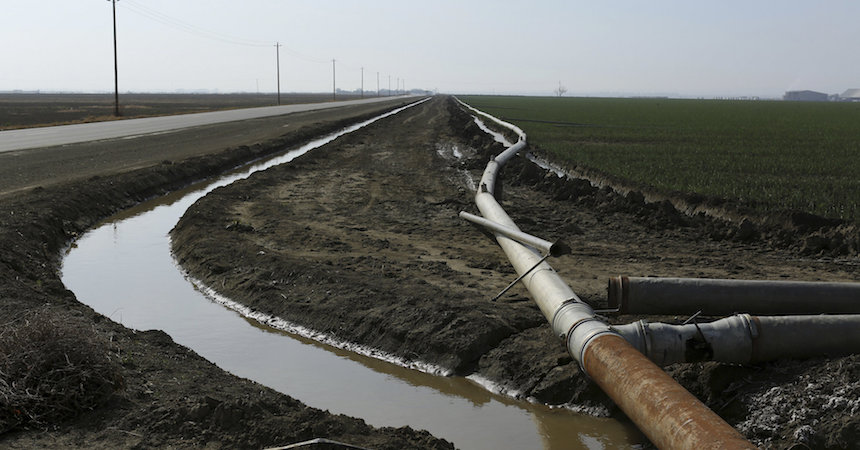
There is considerable concern about the fate of toxic chemicals that are accidentally or intentionally introduced into the drinking water supply system. A significant part of this concern is the likelihood of chemicals adhering to the water infrastructure—in particular, on the internal surfaces of pipe materials. Chemical adsorption is a concern because it generates the potential for a longer-term release that may be difficult to counteract. Therefore, understanding adsorption to pipe materials is vital to the formulation of appropriate decontamination protocols. The focus of the current study is malathion, a pesticide and common surrogate for VX (O-ethyl S-[2-(diisopropylamino)ethyl] methylphosphonothioate) nerve agent. Malathion is used in approximately 174 products registered for use in the United States and 1,953 products worldwide.
The objectives of this work were to develop adsorption isotherms describing malathion adsorption to pipe materials; investigate the presence of malathion on pipe surfaces using X-ray photoelectron spectroscopy (XPS); and use thermogravimetric analysis (TGA) with Fourier transform infrared spectroscopy (FTIR) and gas chromatography/mass spectrometry (GC/MS) to investigate the presence of malathion, or its related byproducts, in the off-gas. The results of this effort indicated how malathion interacted with pipe surfaces, which may influence decontamination responses following a chemical release. Microspheres were included in this work to confirm that the sorption capacity depended on the surface-area-to-volume ratio.
Chemisorption of malathion was observed on copper and iron specimens with a series of adsorption experiments and by XPS analysis of the metal surfaces. Adsorption was greater for copper than for comparable iron surfaces, and for microspheres with relatively high surface-area-to-volume ratios. Generally, the solid phase concentration of malathion on the virgin and used pipe specimens was 0.2–1 mg/g, while that of the copper and iron microspheres was generally higher and 0.5–5.1 mg/g. XPS spectra revealed distinctive peaks associated with the presence of phosphorus and sulfur, strongly suggesting the presence of malathion on the surface. To the authors’ knowledge, these findings are the first to show that malathion adheres to the surfaces of pipe materials. XPS analysis also confirmed the presence of oxygen on the surfaces of copper and iron, implicating metal oxides known to bond with the phosphorus molecules found in malathion. TGA analysis of pipe specimens did not readily facilitate the detection of malathion or its byproducts, which likely suggests that the protocols need to be improved, but this may also attest to the strength of the chemical bonds holding malathion to the surface. The practical implications of these findings are significant because chemicals that adhere to pipe surfaces with relatively strong bonds may appear in the water at relatively low (perhaps undetectable) concentrations, leading to exposures on a time scale that could be quite long.
Learning how to decontaminate metallic pipes may require better fundamental insights into the adsorption of organophosphates to pipe surfaces and the compounds that coat them. The current work suggests that metal oxides may be central to this issue, as XPS and desiccation profiles together suggest their presence on the pipe specimens used in the current study. Metal oxides are common in drinking water distribution networks and can form stable chemical bonds with the phosphorus molecules found in organophosphates (i.e., malathion).
Future studies should use the current approach (i.e., sorption isotherms, XPS, TGA with FTIR or GC/MS) with other contaminants and a variety of used pipes with active biofilms and other deposits, as this likely would impact the sorption mechanisms and reversibility. TGA protocols should be revised to improve their sensitivity, particularly when there is evidence of strong affinity between the surface and the constituent of interest. Future studies should also use experimental conditions that match the ionic strength, alkalinity, and redox state that may be encountered in water distribution networks of interest.
This feature is a summary by corresponding author, Willie F. Harper Jr., a full professor in the Environmental Engineering and Science program at the Air Force Institute of Technology. For full text: pdf
